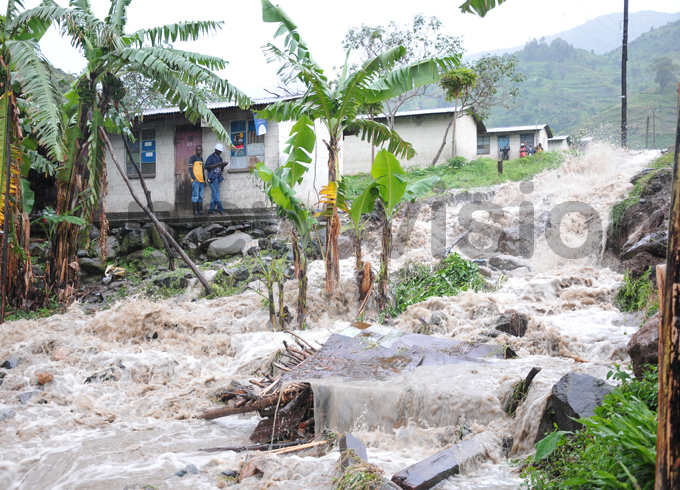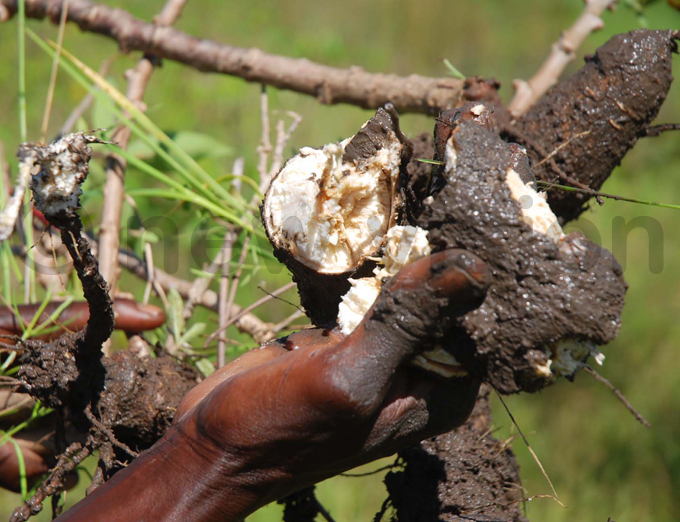Food production to drop as climate changes
Areas like Nakasongola, Ngoma and generally the cattle corridor are already facing the wrath of low rains
Climate change will leave swaths of sub-Saharan Africa including Uganda, unable to produce staple crops such as maize, bananas and beans by the end of the century, according to a report that calls for an urgent transformation of the region's agriculture.
The study, led by the International Center for Tropical Agriculture (CIAT), says that rising temperatures and droughts will force "significant areas" to find alternative crops, improve irrigation systems or even abandon crop-based agriculture completely by the year 2100.
According to the Climate Change Department, Ministry of Water and Environment, Uganda is one of the countries that are greatly vulnerable to climate change impacts, in respect of climate variability including increasing temperatures, increased frequency and intensity of rainfall, heat waves, droughts, floods and storms. The regions and ecosystems across the country, like the mountain regions, the lowlands and the cattle corridor, differ in their vulnerability and adaptive capacity. In general the sectors most vulnerable to climate change impacts are agriculture, water supply, health, transport, housing and personal safety and security.
Dr Swidiq Mugerwa, the Director of the National Livestock Resources Research Institute and a long time mitigator of climate change related issues, says areas like Nakasongola, Ngoma and generally the cattle corridor are already facing the wrath of low rains while areas like Teso and parts of the north suffer from floods due to above normal rains.
The latest study, led by the International Center for Tropical Agriculture (CIAT), says that rising temperatures and droughts will force "significant areas" to find alternative crops, improve irrigation systems or even abandon crop-based agriculture completely by the year 2100.
In response to the study, Mugerwa says that farmers must adopt early to adapt to the changes. "Farmers must practice agriculture that aims at replenishing the environment rather than taking away from the environment," he says. Such practices include planting trees of any kind including those consumed by livestock.
 Some part of the country have experienced severe floods due to above normal rains.
Some part of the country have experienced severe floods due to above normal rains.
The authors of the CIAT study warn that time is running out and say delays in taking the necessary adaptive steps now will further jeopardise food security and undermine the fight against poverty.
Their report, published in Nature Climate Change, examines the likely impact that climate change will have on the nine crops that make up half of the food produced in the region: bananas; cassava; beans; groundnuts; maize; sorghum; yams; pearl millet and finger millet.
Although six of the crops are expected to remain stable despite moderate and extreme changes, up to 60% of bean-producing areas - and up to 30% of those growing maize and bananas - are projected to become unviable by the close of this century. Uganda is one of the leading maize producing countries in the region. Last year, production of maize hit an all-time high of 4.2million metric tons.
According to the report, failure to switch to beans that can cope better with heat stress could prove particularly devastating: the report predicts that 1.85m hectares (4.6m acres) of bean-cropping systems in Uganda and Tanzania - which between them produce 41% of sub-Saharan Africa's beans - will be unable to do so by 2100. During the October 2015 and February 2016 season, bean production dropped in Uganda due to heavy rains. Most of the farmers lost the produce on the farm because of rotting.
West Africa's banana-growing countries, such as Togo, Ghana and Benin, and maize-growing areas in southern Africa - Namibia, Botswana, Zimbabwe and Mozambique among them - will also need to undergo transformation within the next 10 years before the land becomes unsuitable.
The report's lead author, Julián Ramírez-Villegas, said the loss of bean-producing areas would have drastic consequences as beans, known as "the meat of the poor", are a vital source of protein for many people in the region.
"Although exact figures will be difficult to determine at this point, in a scenario where we take no action, you are talking of Ugandans - and more broadly also east Africans - having less available protein," he said. "This would likely increase stunting rates and undernourishment."
 A farmer showing rotting cassava tubers destroyed by the floods in Teso region.
A farmer showing rotting cassava tubers destroyed by the floods in Teso region.
Among the solutions the report proposes are: improving agronomy, irrigation options and agro-climatic services for farmers; breeding crops that are more resistant to heat and drought; switching to more resilient crops such as millet and sorghum; and, where necessary, moving from crops to livestock.
The authors point to the success of intercropping banana with coffee, which has been found to raise incomes by 50% and build resilience in Uganda, and to the SMS and radio broadcasts offering climate information to more than 7 million rural people in Senegal. They also note that during the drought of 2005-06, many Kenyan pastoralists switched from cattle to camels as the latter need less water, feed on arid shrubs and produce six times more milk than indigenous cows.
While the experts concede that adjusting the agricultural development and food security policies of different nations is a slow and complicated business, they warn that delays will carry a high human and economic cost.
"Agriculture and farming are critical not only for the livelihoods of farmers but also more broadly for the diets of the region's population," said Ramírez-Villegas.
"Unless timely adaptation actions are taken, we're looking at a bleak picture in terms of food security and poverty throughout many areas of sub-Saharan Africa."
Dr Swidiq Mugerwa, the Director of the National Livestock Resources Research Institute (NaLiRRI) says that farmers must adopt early to adapt to the changes. "Farmers must practice agriculture that aims at replenishing the environment rather than taking away from the environment," he says. Such practices include planting trees of any kind including those consumed by livestock.